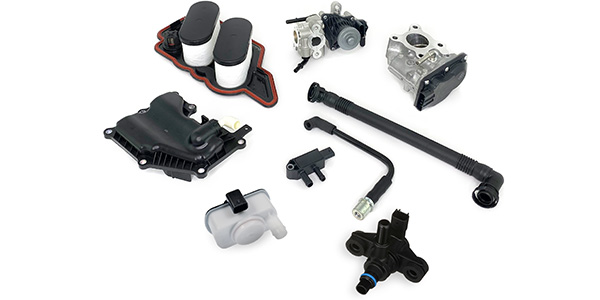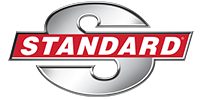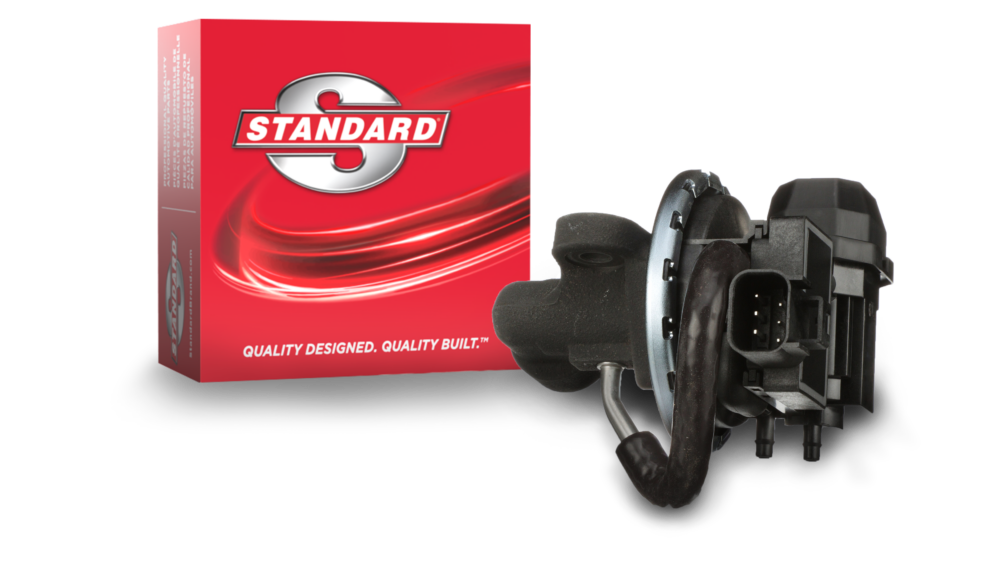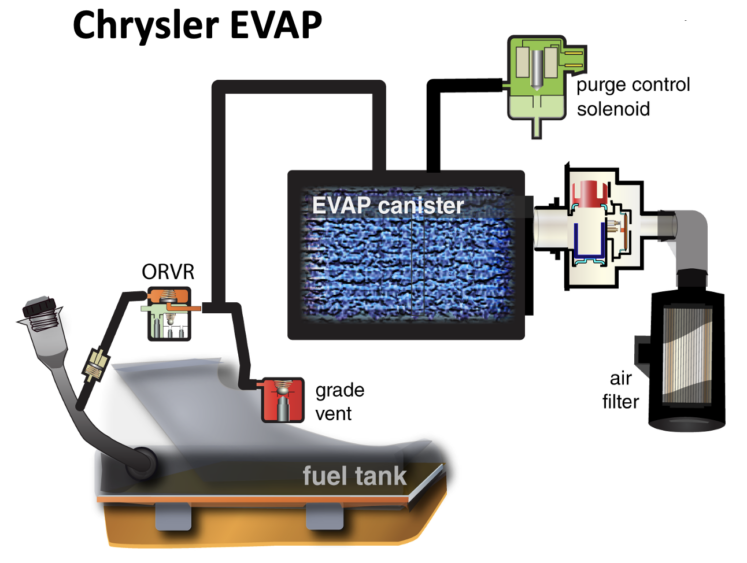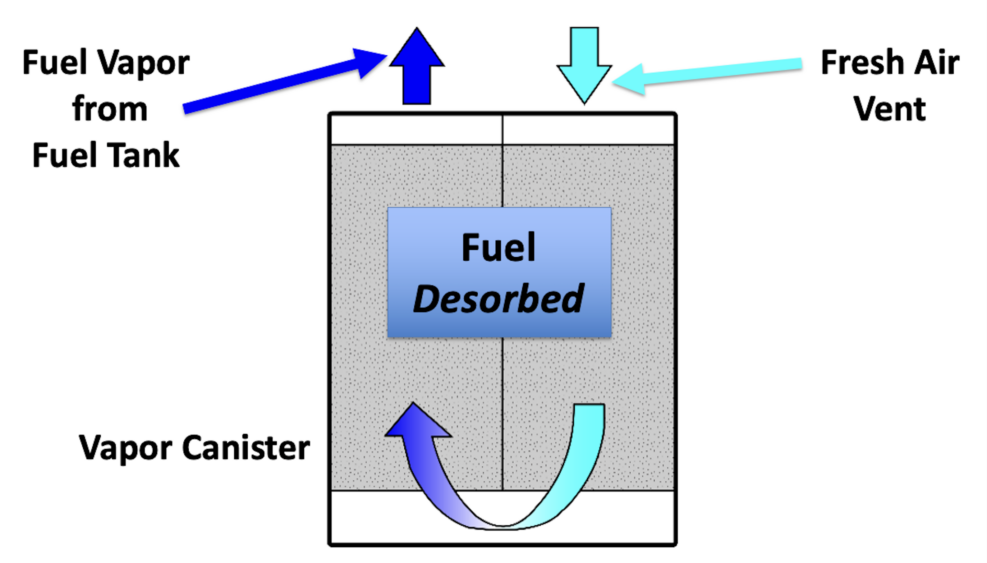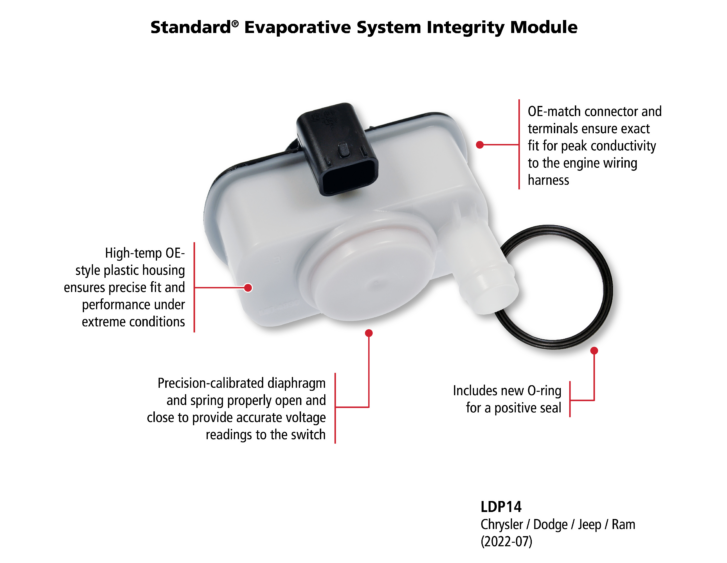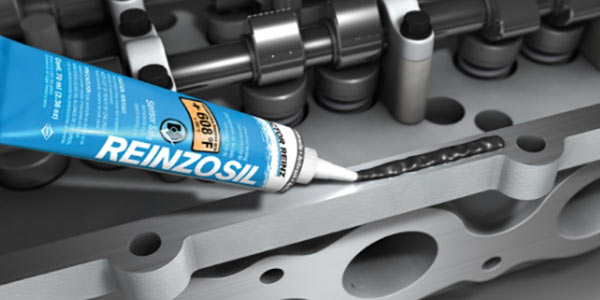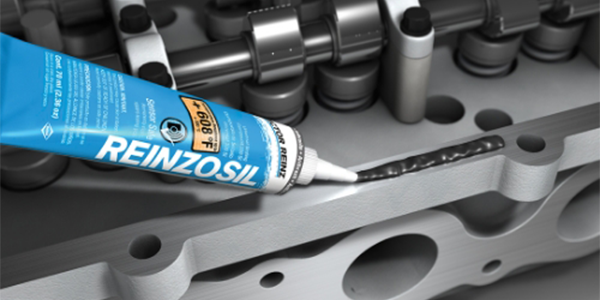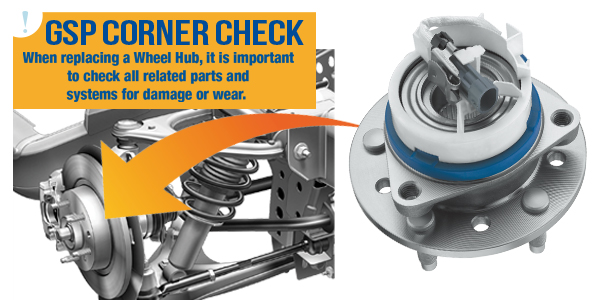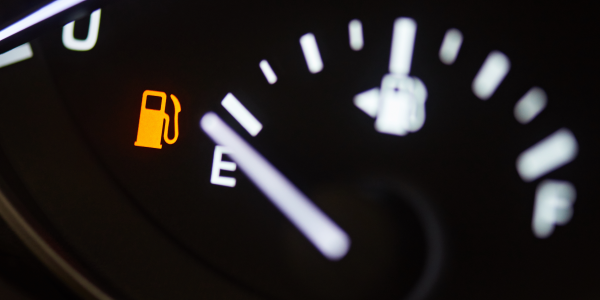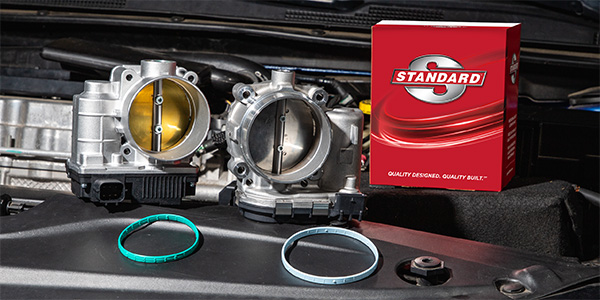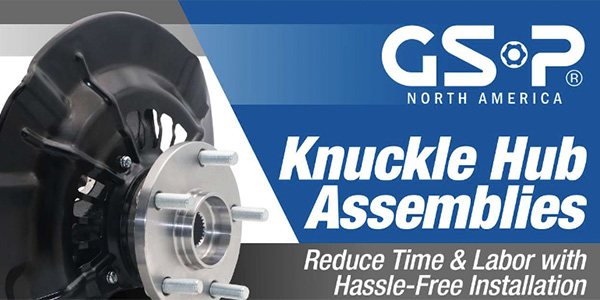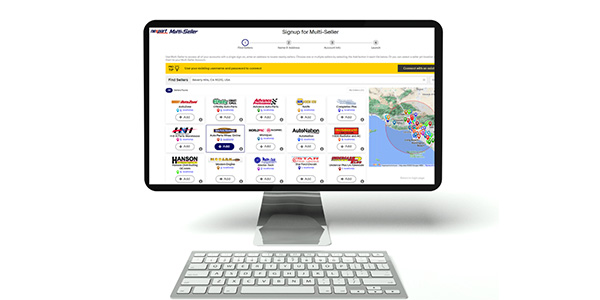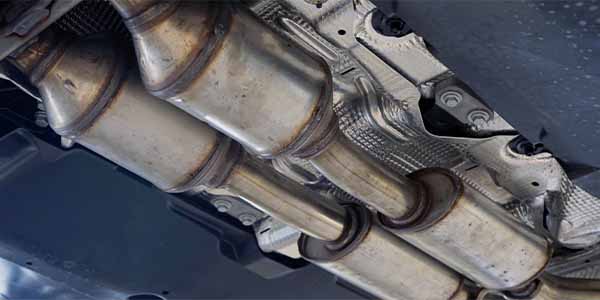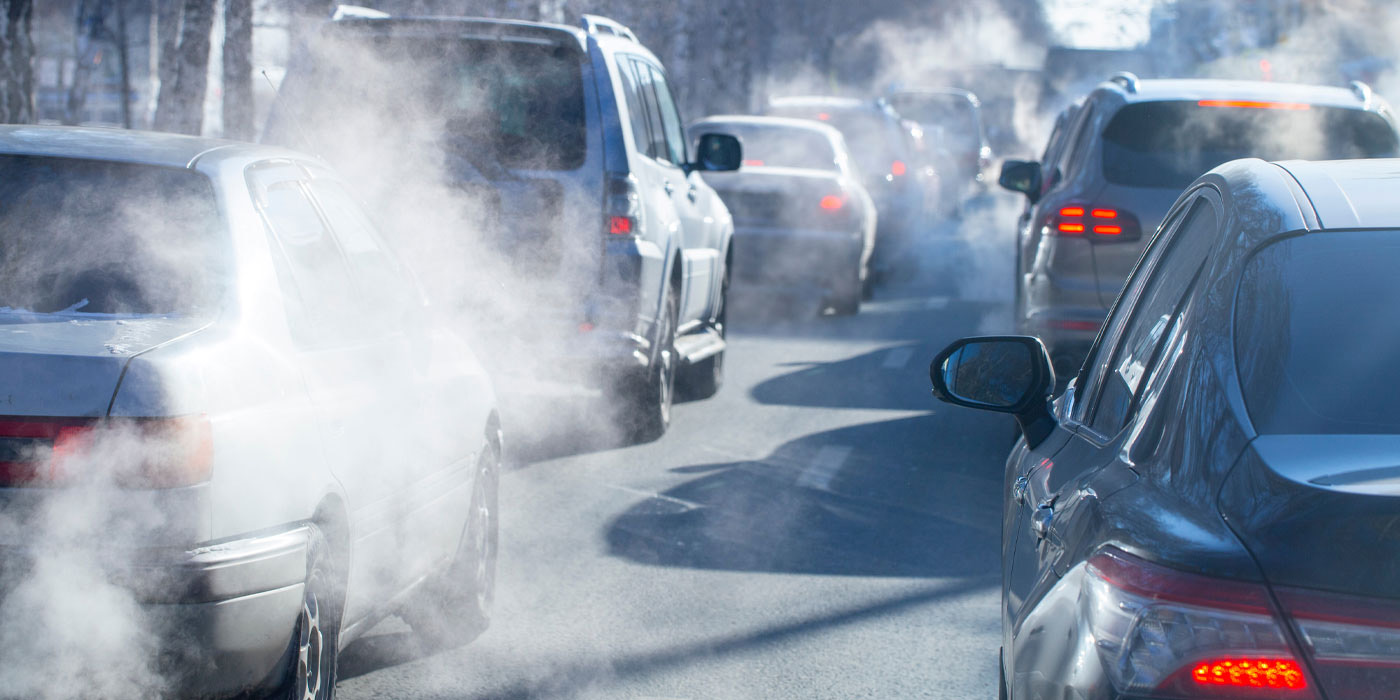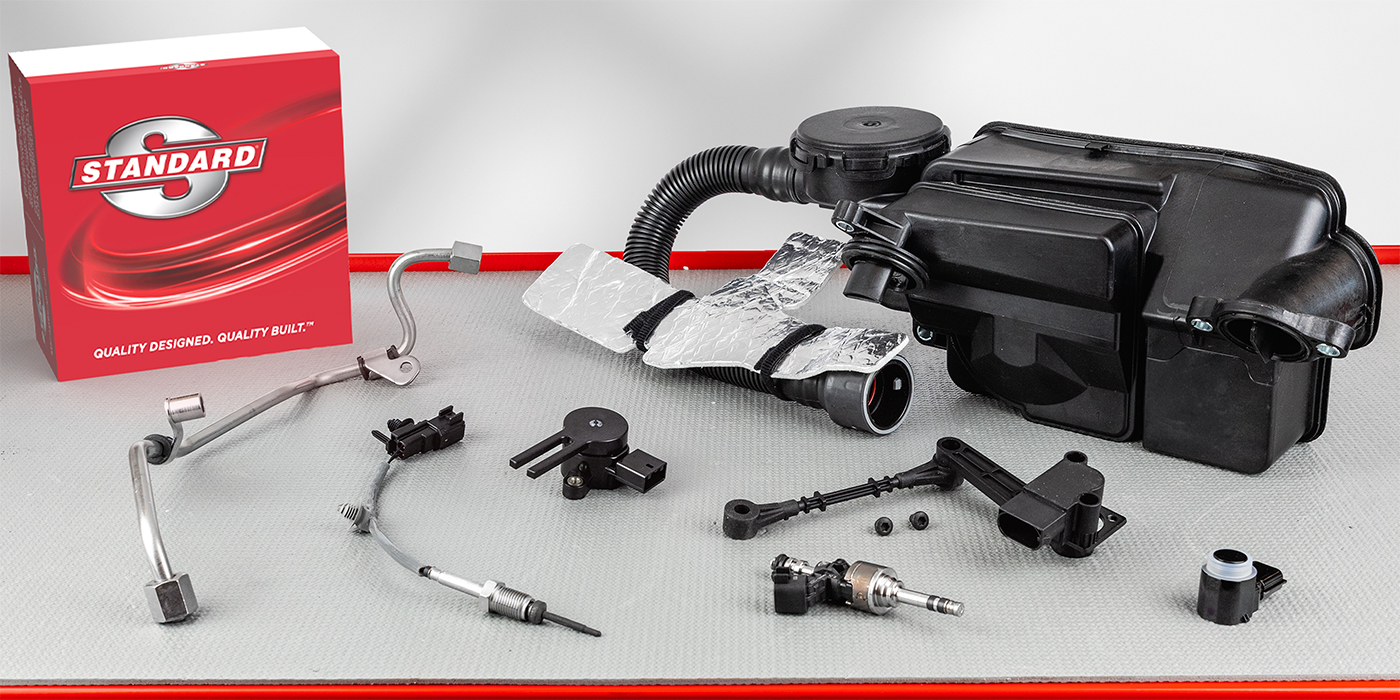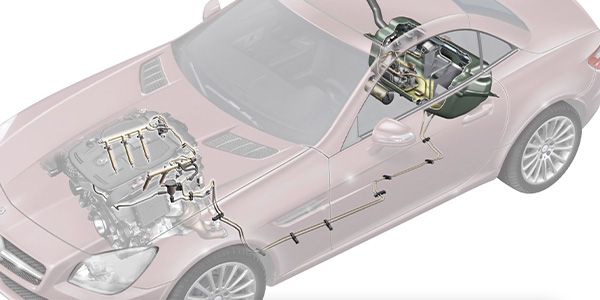The Check Engine Light (CEL) is arguably one of the most effective yet underappreciated advancements in reducing vehicle emissions. Following the introduction of On-Board Diagnostics II (OBD II), the CEL is illuminated continuously if an on-board system monitor has failed a specified number of times and is negatively affecting emissions. If a catalyst-damaging event, such as a misfire, occurs, the CEL will flash. In today’s world of electric vehicles, hybrids, and partial zero emission vehicles, many people forget that simply keeping their internal combustion engine (ICE)-powered vehicle operating as designed will help in reducing emissions.
Fuel Injection’s Effects on Emissions
With advancements in electronic fuel injection, the operation of the engine is so finely tuned that the powertrain control module (PCM) is optimally programmed to balance the air fuel ratio, ensuring maximum fuel economy and reducing tailpipe emissions. Various inputs, such as engine and air temperature (via ECT and IAT), the amount of air entering the engine (via MAF), and the throttle opening (via TPS) are all part of the equation. If any of these are out of range, the efficiency of the engine will be reduced and have a negative effect on the output controls from the PCM for devices such as fuel injectors and an electronically controlled transmission.
Fuel injection has contributed to reducing emissions by precisely controlling the amount of fuel mixed with the air coming into an engine. Port-style fuel injection finely tunes the amount of fuel that is supplied to each cylinder, and with Gasoline Direct Injection (GDI) on today’s vehicles, the amount of fuel that is directly fed into each cylinder is even more accurately controlled.
Exhaust Gas Recirculation
Exhaust gas recirculation (EGR) valves are more in line with what people envision when they think of vehicle emissions systems. One of the more harmful tailpipe emissions is nitrogen monoxide or NOx. NOx is produced when the internal combustion temperature gets too high. One way to cool the combustion temperature is to dilute the oxygen entering the cylinder with already-burnt air and choking out the flame. This is exactly what the EGR system does. By recirculating a small, metered amount of exhaust gas into the intake, the EGR system helps to cool the combustion chamber and reduce NOx. EGR systems come in many shapes and forms. Some have a digitally controlled EGR valve, while others are vacuum-controlled by a separate solenoid. Some are monitored by a change in MAF reading, some are monitored by temperature sensors, and some are monitored by a pressure differential sensor.
Standard® EGR Valves are a direct-fit replacement to the original and provide long-lasting durability.
In the late ‘90s, engineers discovered that they could achieve some level of EGR by phasing the exhaust valve to close later and overlapping with the intake stroke. This would draw in some exhaust gas and achieve the EGR result. Over the past 20+ years, Variable Valve Timing (VVT) has evolved from retarding the exhaust camshaft to advancing the intake camshaft, and in many cases doing both at the same time. VVT currently contributes to reducing tailpipe emissions while helping to increase engine performance. A faulty VVT system will certainly have a negative effect on the vehicle’s emissions.
Evaporative Emissions
Evaporative emissions systems (EVAP) were introduced in the 1970s, and would eventually prove to be one of the most prominent advancements in vehicle emissions. While this system didn’t get a whole lot of attention until the ‘90s when it began being monitored and setting Diagnostic Trouble Codes, it has been reducing emissions for decades! The primary job of the EVAP system is to capture hydrocarbons (fuel vapors) in the fuel tank and redirect them to the engine where they can be consumed.
As fuel gets sloshed around in the fuel tank, the tank heats up, or as warm fuel is returned to the tank from the fuel rail, it will create vapors, which will be captured in the EVAP canister. Also, as fuel is added to the tank, it will displace the air in the tank, which will carry fuel vapors. The escaping air will be routed through the EVAP vent assembly, which contains a solenoid to open and close the vent. At this time, fuel vapors will also be adsorbed by the activated charcoal in the canister. Under certain driving conditions, the EVAP purge solenoid will be energized and apply vacuum to the canister, drawing fresh air in through the vent, and then through the canister, which will purge the fuel vapors from the canister, and eventually draw them into the engine to be consumed.
All of these systems work together to reduce emissions, and keep the Check Engine Light off! Any fault with any of these components could have a negative effect on the emissions. When a fault is detected, it is important to choose a quality replacement part that matches the performance of the original design in all conditions. Standard’s Emissions program includes more than 5,500 products for import and domestic vehicles. Standard® also offers complete VVT and Fuel Injection programs. The Standard® Emissions program includes Canister Purge Solenoids, EGR Valves, Fuel Vapor Canisters, Canister Vent Solenoids, Canister Purge Valves, EVAP System Integrity Modules (ESIM), EGR Control Solenoids, Crankcase Breather Hoses, Crankcase Filters and much more. Standard’s emissions components are precision-engineered and tested for durability and OE-matching performance. Standard® engineers develop more durable, longer-lasting components to help keep vehicles running clean.
Every Standard® emissions component is calibrated for precise performance. To ensure trouble-free operation, each one must pass comprehensive quality testing, including computer-controlled bench testing for resistance, leakage, and response and flow rates.
For more information on Standard® emissions components, visit StandardBrand.com and for help diagnosing and replacing these components, search “emissions” on the Standard Brand YouTube channel.
This Article is Sponsored By: Standard®


